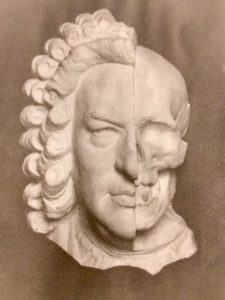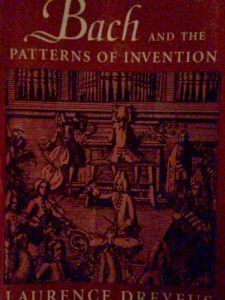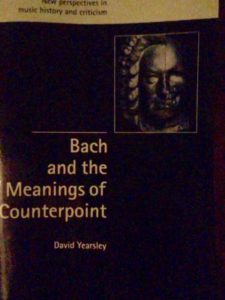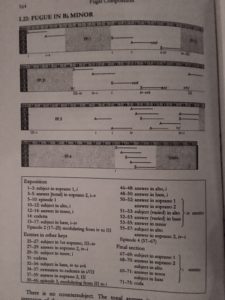I’ve interrupted my Yukio Mishima binge for good reason. Steeped as I am in the Well-Tempered Clavier, I’ve come to know some of essential contemporary texts on Bach’s process, his reaction and interaction with the cultural trends of his time, and specific analysis devoted to the WTC.
Laurence Dreyfus’ excellent Bach And The Patterns Of Invention presents a very compelling and conceivable portrait, through analysis of various works, of the nuts and bolts of the composer’s creative process.
“A simple point suggests that a heirarchy of logical processes existed. If a passage was to be transformed several times during the course of a piece, Bach must have planned at least some of its transformations in advance; if not, how would he know if they would succeed? Thus, while there is no reason to suppose that Bach necessarily composed a piece in the order in which it finally proceeds, there is every reason to suppose that he composed some of it out of order. Consider, for example, instances of double counterpoint in which two themes are inverted at the octave: the composer must have contemplated the voice-exchange. To believe otherwise would mean that Bach arrived midway in the composition of a double fugue, inverted the two themes, and then congratulated himself on his good fortune that the themes inverted flawlessly. Common sense argues against this scenario, as does the testimony of Emanuel Bach, who writes that ‘when [Bach] listened to a rich and many-voiced fugue, he could soon say, after the first entries of the subjects, what contrapuntal devices it would be ossible to apply, and which of them the composer by rights ought to apply, and on such occasions, when I was standing next to him, and he had voiced his surmises to me, he would joyfully nudge me when his expectations were fulfilled.'”
A playful nudge in the ribs across the centuries from the King of Counterpoint.
Both Dreyfus and David Yearsley in his estimable Bach And The Meanings Of Counterpoint further elucidate the potential unspoken musical narrative Bach’s work may have been intended as protest or dissent, as Dreyfus puts it, composing ‘against the grain’, of the prevailing and musically regressive tastes of his time, a mid-18th Century Stalinist proscription against ‘formalism’ in favor of lighter fare. Learned counterpoint was too demanding, too unnatural, too old.
True, Bach oftentimes wrought his work, shown as rife in the excellent and essential commentaries on each by David Ledbetter in his seminal Bach’s Well-Tempered Clavier: The 38 Preludes And Fugues, in terms of their specific musico-historical templates (multi-various, to my surprise). J.S. Bach, from the ingots of traditional motives and subjects, acting, as Stravinsky in his own time, as a synthesist, taking humble and doddering materials and remaking them,sometimes ironically, sometimes radically, always illuminatively, into the best they could be, through his own unsurpassed ingenuity. Even among his detractors, learned counterpoint had been brought to its apex by this man; there was nowhere further or better to go.
In my daily work, the Ledbetter volume is always by my side. I’m similarly assisted by the Groocock volume, focused purely on the Fugues of the 48. I especially like his graphs of each Fugue (his volume takes some time to get used to its organizational sense, divided into chapters of 3 Voices, 4 Voices w/Stretto, etc.; rather unnecessarily obtuse) and invaluable structural insights.
If I had to choose only one to recommend, I’d have to go with the Ledbetter. But they’re all great and I’m happy to have immersed myself in this material so thoroughly and passionately advocated.







Never miss out on Christopher’s events or special notices.